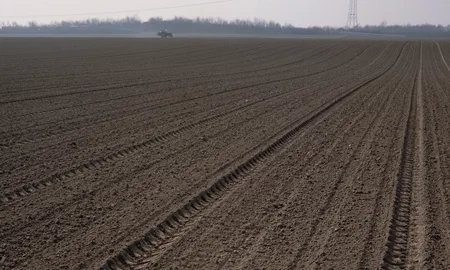Published on 16th September 2024
Weed Management
Residuals must cover October and early November when black-grass germinates

“Harvest has been much as expected after the bad weather, below average is putting it mildly and oilseed rape in particular has been poor. For many farmers, this is the last year growing the crop and I expect the total area will fall by another 20–25%.”
AICC Committee Member, Patrick Stephenson, points out that the loss of a previously reliable break crop makes constructing a profitable rotation which deals with grass-weed problems more of a challenge.
“Rotations are having to get longer, six or seven years for crop diversity. Spring cropping is important, but we need to be aware of take-all problems with lots of cereals in the rotation. Winter beans will pick up some of the lost OSR area and there is a new vining pea group operating in this area too.
“Grass for cutting or grazing is something to look at, there are good opportunities for integrating with livestock. SFI schemes will be part of the rotation for many as well.”
Although some farmers have chosen the regen approach and won’t plough, he thinks that rotational ploughing will remain an important corrective tool for grass-weed control on the majority of farms in his region.
This autumn is a case in point, there’s lots of compaction and soil structure problems that will need some corrective measures. He advises farmers to get a spade and take a look to work out what needs doing.
“I don’t expect many farmers to delay drilling this season,” he says.

Patrick Stephenson, AICC
“It’s quite downbeat out there at the moment as yields are coming in. People are licking a lot of wounds. Farmers are keen to get crop in and out the ground because that’s 60% of the work done. All I would say is don’t forget about the problems weeds can cause.”
“Prioritise drilling areas with a lower burden first, and the worst areas last. It might only be seven days difference but one week means 10-15% less black-grass germinating in the crop according to NIAB information.”
“Apply the pre-em within two to three days after drilling for best efficacy, we have got new chemistry like aclonifen and cinmethylin as well as several other actives that work well. You can expect 80–85% control from a successful autumn programme, which is pretty good but not enough to rely on without the cultural measures.”
Mr Stephenson stresses that applying at the true pre-em timing is the best guarantee of efficacy. Focusing on drilling a large area can mean the pre-em gets delayed affecting performance. Given the weed carryover and early drilling, a two-spray programme is likely to be the standard this autumn.
“I err towards keeping the two sprays as tight as you can, ten days to two weeks. Delaying too long can reduce efficacy, the best control must cover October and early November when most black-grass germinates.”


